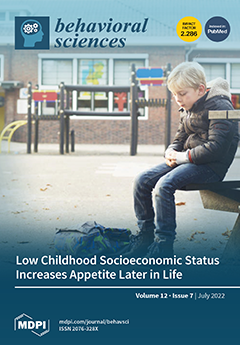Purpose: To identify clinical phenotypes and biomarkers for best mortality prediction considering age, symptoms and comorbidities in COVID-19 patients with chronic neurological diseases in intensive care units (ICUs).
Subjects and Methods: Data included 1252 COVID-19 patients admitted to ICUs in Cuba between January
[...] Read more.
Purpose: To identify clinical phenotypes and biomarkers for best mortality prediction considering age, symptoms and comorbidities in COVID-19 patients with chronic neurological diseases in intensive care units (ICUs).
Subjects and Methods: Data included 1252 COVID-19 patients admitted to ICUs in Cuba between January and August 2021. A k-means algorithm based on unsupervised learning was used to identify clinical patterns related to symptoms, comorbidities and age. The Stable Sparse Classifiers procedure (SSC) was employed for predicting mortality. The classification performance was assessed using the area under the receiver operating curve (AUC).
Results: Six phenotypes using a modified v-fold cross validation for the k-means algorithm were identified: phenotype class 1, mean age 72.3 years (ys)—hypertension and coronary artery disease, alongside typical COVID-19 symptoms; class 2, mean age 63 ys—asthma, cough and fever; class 3, mean age 74.5 ys—hypertension, diabetes and cough; class 4, mean age 67.8 ys—hypertension and no symptoms; class 5, mean age 53 ys—cough and no comorbidities; class 6, mean age 60 ys—without symptoms or comorbidities. The chronic neurological disease (CND) percentage was distributed in the six phenotypes, predominantly in phenotypes of classes 3 (24.72%) and 4 (35,39%); χ² (5) 11.0129
p = 0.051134. The cerebrovascular disease was concentrated in classes 3 and 4; χ² (5) = 36.63,
p = 0.000001. The mortality rate totaled 325 (25.79%), of which 56 (17.23%) had chronic neurological diseases. The highest in-hospital mortality rates were found in phenotypes 1 (37.22%) and 3 (33.98%). The SSC revealed that a neurological symptom (ageusia), together with two neurological diseases (cerebrovascular disease and Parkinson’s disease), and in addition to ICU days, age and specific symptoms (fever, cough, dyspnea and chilliness) as well as particular comorbidities (hypertension, diabetes and asthma) indicated the best prediction performance (AUC = 0.67).
Conclusions: The identification of clinical phenotypes and mortality biomarkers using practical variables and robust statistical methodologies make several noteworthy contributions to basic and experimental investigations for distinguishing the COVID-19 clinical spectrum and predicting mortality.
Full article






